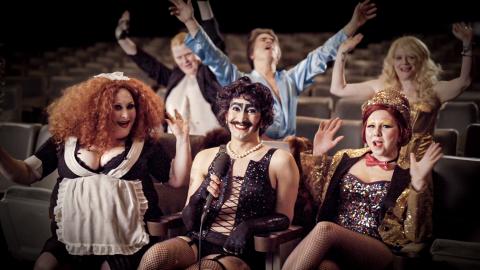Monopoly: The game that starts Christmas arguments across the world
How did Monopoly go from being an obscure, self-published game about the dangers of unrestrained capitalism, to a rage-inducing Christmas Day staple that pits family members against one another in a battle of unalloyed greed? And how, when the game was introduced to Britain, did we end up with such a seemingly random collection of street names and stations?
Let’s roll the dice, pass GO, avoid going straight to jail and find out …
A very different game
The Monopoly story begins in the United States. Lizzie Magie was a writer and feminist who invented a new board game in 1903 called The Landlord’s Game. Magie’s game aimed to teach people about the dangers of monopolies by having individuals try to accumulate as much wealth as possible whilst bankrupting everyone else in the process.
An alternate version of the game did encourage players to work together to distribute wealth fairly, thus illustrating the benefits of an anti-monopolist society.
The self-published game proved incredibly popular amongst left-leaning people across the Northeastern United States, with three versions being published between 1903 and 1939.
However, it was in 1932 that the seeds of the modern game were sown when a certain Mr. Charles Todd invited his childhood friend Esther Jones and her husband Charles Darrow round for dinner. After their meal, Todd suggested they play The Landlord’s Game.
Darrow was immediately hooked and asked for a set of rules for the pro-monopolist version of the game. He then designed his own version - most notably adding the idea of collecting sets of properties - which he began distributing under the name Monopoly. It proved highly successful.
The corporate takeover
In 1935, Monopoly was brought to the attention of the US toy manufacturer, Parker Brothers. The company could see the potential in the game and bought the rights to make and distribute it. Darrow claimed to be the sole inventor of the game; when Parker Brothers found out it was a variation of The Landlord’s Game, they offered Lizzie Magie $500 for her patent. It was the only money she would ever make from the modified version of the game she invented.
Parker Brother’s version of the game was an instant hit with the public. Given a now familiar redesign with the help of the cartoonist F. O. Alexander, the Atlantic City-set game was selling 20,000 units a week within a month of its release in January 1935. These figures made it by far the biggest-selling product Parker Brothers had produced in its 50-year history.
Monopoly heads to the UK
Waddingtons Ltd. had started as a printing company in Leeds in the 19th Century. It then branched out into playing cards in the 1920s, sending a game of theirs called Lexicon to Parker Brothers in the hope of getting a toehold in the US market. Remembering the UK firm, Parker Brothers boss Robert Barton sent a copy of Monopoly over to England.
Waddingtons’ boss, Victor Watson, passed the game over to his son Norman and asked him to give it a try over the weekend.
‘I played an imaginary game against myself continuing through Friday night, Saturday night and Sunday night,’ Norman later recalled. ‘I was enthralled and captivated. I had never found a game so absorbing.’
Norman rushed into work on the Monday and gushed enthusiastically to his father. Victor Watson took the unprecedented step of making a transatlantic phone call to Robert Barton about the game. By the end of the call, Waddingtons had secured the rights to manufacture the game under license to Europe and the British Empire.
They may have had the game, but it was clear some changes would need to be made if it was to sell to British people unfamiliar with its American locations. The streets of London would replace those of Atlantic City - but what streets? Despite being unfamiliar with the capital, Victor volunteered to go and scout out alternatives, taking the train down to London with his secretary Marjorie. The seemingly random choices they made have baffled players ever since.
Renaming the squares
There was a method to the apparent randomness. All but one of the eight sets has a theme. The browns - the cheapest of the lot - represent working-class London. The blues are all situated along the capital’s 18th Century ‘New Road’. The pinks represent the heart of government, as well as the gentlemen’s clubs where the powerful relaxed after a busy day ruling the country.
The orange set represents law and order; the reds have no specific theme but do include three of the most famous locations in London, and the yellows represent London’s entertainment industry and bustling nightlife.
The greens represent the capital’s finest retail streets and the dark blues - the most expensive squares on the board - are named after one of London’s most prestigious streets and most affluent areas. The stations, meanwhile, are the four London termini of the London and North Eastern Railway, which served Victor and Marjorie’s hometown of Leeds.
Monopoly goes global
With its sets and stations renamed, the game was a massive success when it was released in the UK in 1936. Thanks to the European and Empire distribution deal with Parker Brothers, the Waddingtons version became the most well-known around the world, particularly in the Commonwealth where Old Kent Road and Fenchurch Street Station were just as familiar to people in Sydney as they were to the residents of Sidmouth. Monopoly, along with Cluedo, made Waddingtons one of the most successful game manufacturers in the country.
Now owned by the global Hasbro corporation which acquired Parker Brothers in 1991 and Waddingtons in 1994, Monopoly is one of the best-selling board games of all time. Only chess, backgammon and draughts beat it in terms of sales.
Translated into 47 languages with over 300 different versions incorporating everything from Star Wars to a Poundland special edition, an estimated one billion people have played the game since its release in 1935. Nearly 300 million sets have been sold in 114 countries.
From its humble beginnings as an anti-monopolist board game to one of the world’s best-selling entertainment products and the cause of countless Christmas arguments, Monopoly can truly be said to have conquered the world.
Facts about Monopoly
- During World War II, Waddingtons worked with the British Secret Service to produce Monopoly sets that contained escape maps, compasses, files and money that were sent to prisoners in POW camps.
- A Monopoly World Championship has been held on and off since 1973. The prize money is $20,580 - the total value of the money in a standard US Monopoly set.
- The most expensive Monopoly set ever made was designed by the artist Sidney Mobell in 1985 to commemorate the game’s 50th anniversary. The $2,000,000 set is made from 23-carat gold and is on display at the Smithsonian Institution.
















